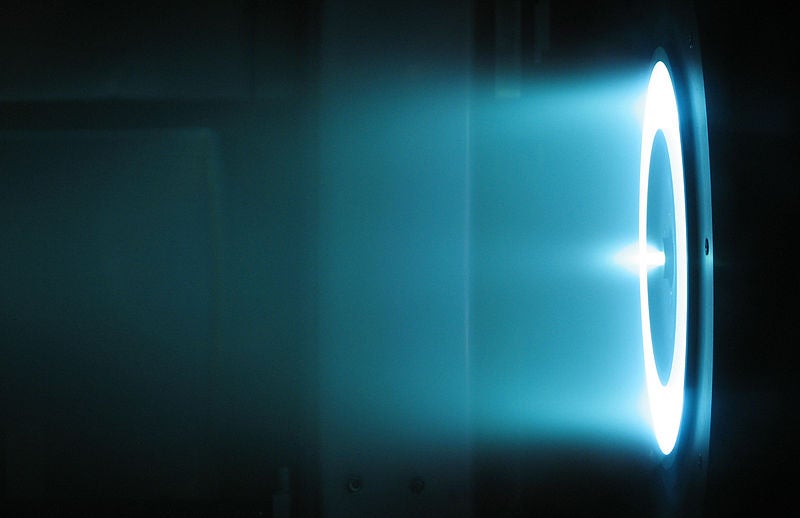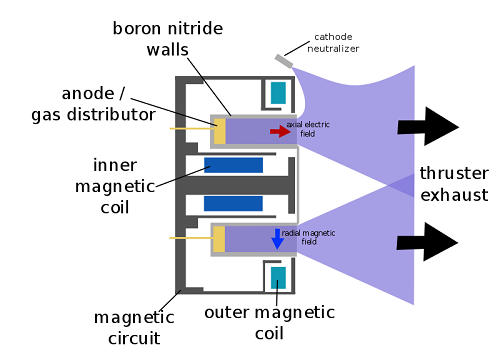#1 One Design Change Could Make a Thruster To Get Us to Mars
Posted: Tue Oct 27, 2015 5:01 pm
Clearly, any craft with this ion thruster design should have two of them.['url=http://gizmodo.com/a-simple-design-change-could-make-a-thruster-to-get-us-1738997991]gizmodo.com[/url] wrote:
A Hall thruster is powering many of the satellites moving around Earth right now. It needs 100 million (yes, you read that right, 100 million) times less fuel than chemical thrusters. But it was never remotely sturdy enough to get anything to Mars—until now.
The Road to Conventional Hall Thrusters
Typical chemical thrusters are pretty simple. Fuel combusts, gases shoot one way, and a rocket shoots the other way.
Ion thrusters are a little different. They contain charged electrodes, an anode and a cathode, and allow positively charged ions to shoot from the anode to the cathode. Thanks to momentum, the ions will “overshoot” the cathode. Under regular circumstances they’d be sucked back, but once they’ve cleared the cathode,they’re hit by a beam of electrons, neutralizing them and allowing them to go on their way without interference from the charged cathode. So the neutralized atoms shoot one way, and the rocket shoots another.
This was a good system, but it required a physical anode and cathode. Hall thrusters are a little different. They work the way regular ion thrusters do, but instead of a physical cathode, they have a virtual cathode.
Electrons can be trapped in space with a magnetic field. Put the magnetic field in front of the anode and you can keep the electrons away. Get enough of those together, and they make a virtual electrode. Because the ions are so much heavier than the electrons, they’re not affected by the magnetic field, so the ions shoot towards the electrons like they’re a regular cathode, and then pass through, where they’re neutralized. This is a Hall thruster, a tube with a physical anode at one end, a cloud of electrons serving as an cathode at the other end, and a bunch of ions zooming through.
The New Design
Hall thrusters are great technology, but they’re not quite good enough for long space missions. The problem isn’t the anode, cathode, or ions, but the container that they’re in. The tube itself gives off electrons. It also gets hit by ions and degrades. All in all, people can get about 10,000 hours of use out of a Hall thruster, which isn’t nearly enough for deep space exploration or heading out to Mars.
So scientists at the French National Center for Scientific Research decided to remove the tube. The first design (above left) was a failure. The red anode should be lined up on the wall emitting xenon. Instead it’s in the magnetic field, allowing electrons to glom onto it, reducing performance.
The new design (above right) makes the small change which allows the anode to keep clear of the field. This one seems to work. The team announced that, though they want to keep making changes, the performance of the thruster is “satisfactory.” And it could “pave the way towards the development of a high-efficiency wall-less Hall thruster.” That thruster could significantly reduce the amount of fuel, and therefore weight, that a spacecraft needs to get around. And that makes a mission to Mars with such a thrusted design more feasible.


